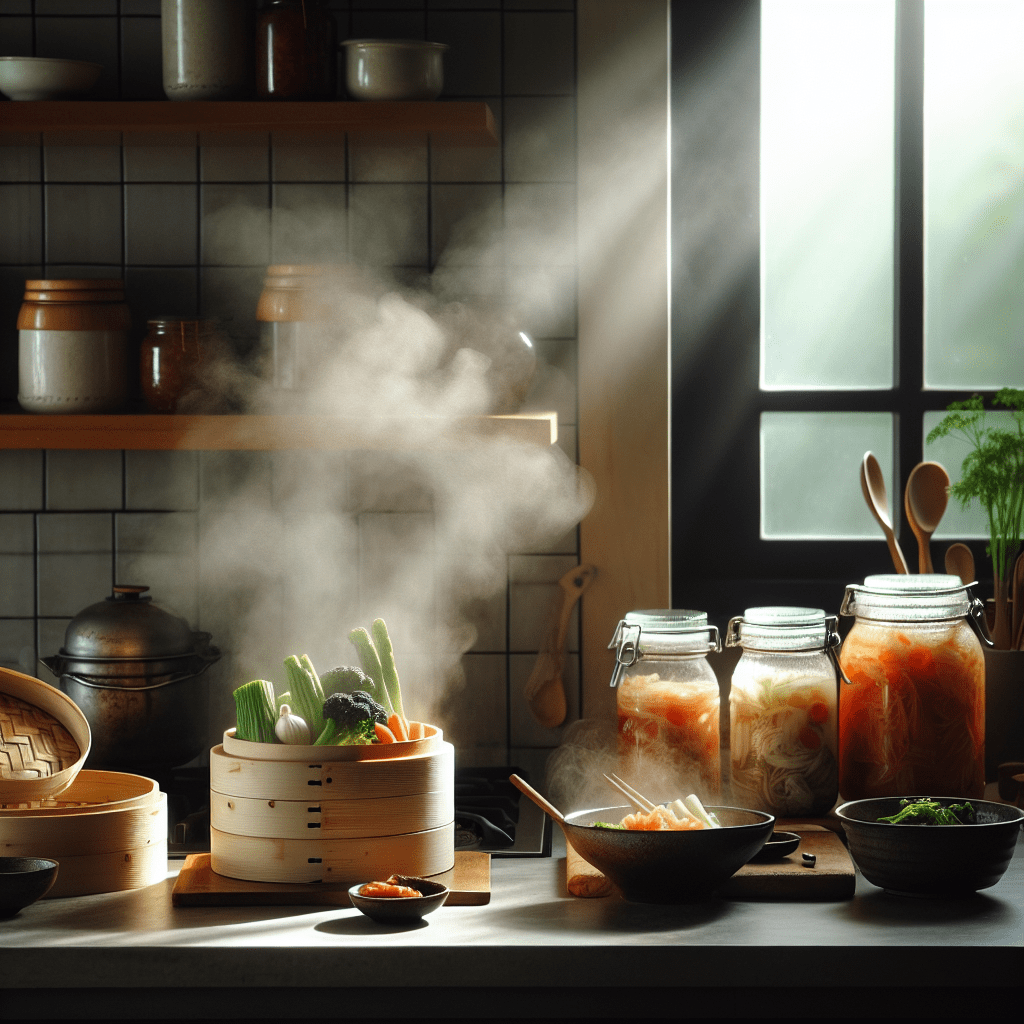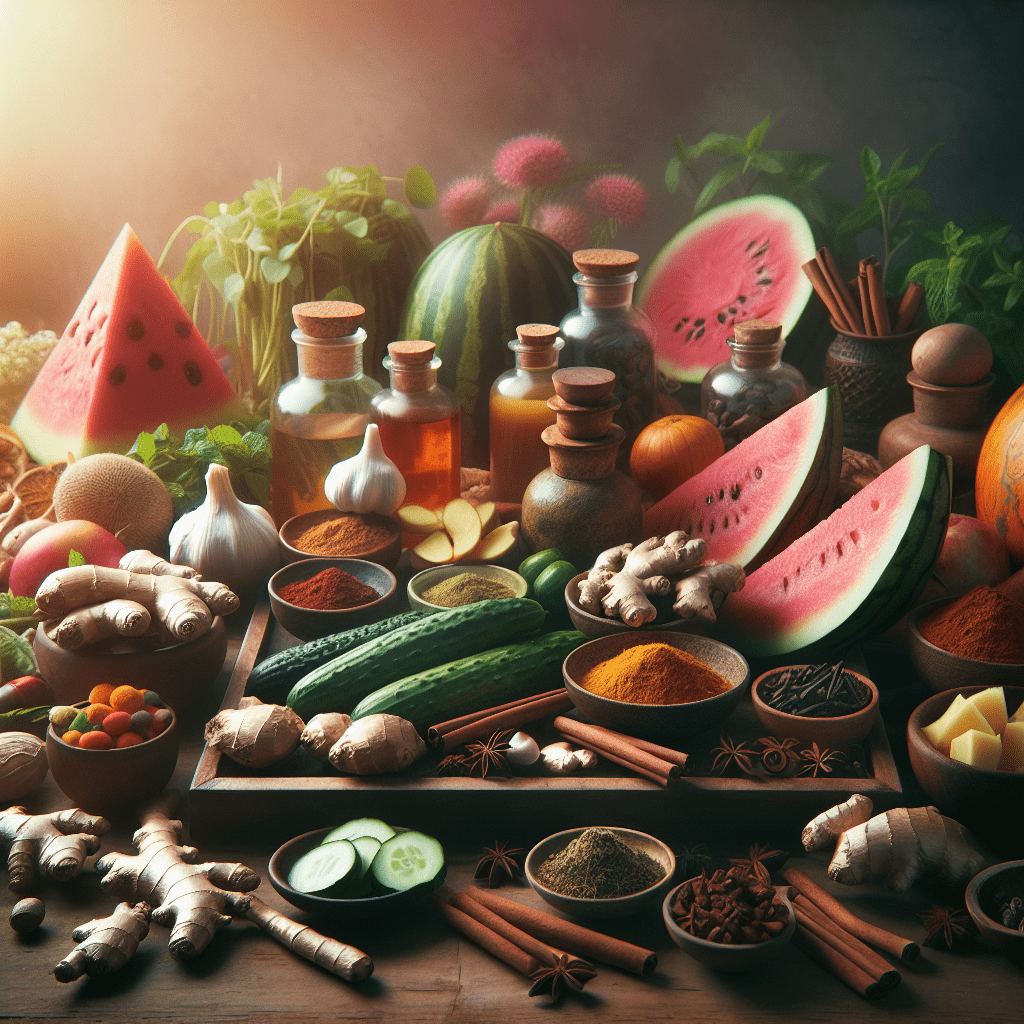In today’s fast-paced world, where processed foods dominate our diets and health concerns are on the rise, the idea of turning our kitchens into sanctuaries of wellness has never been more relevant. The healing kitchen isn’t just a trend; it’s a return to ancient wisdom that views food not merely as sustenance but as medicine.
“Let food be thy medicine and medicine be thy food,” Hippocrates famously said over 2,000 years ago—a philosophy that resonates perfectly with both modern nutritional science and traditional Eastern healing practices. This concept forms the foundation of the healing kitchen, where everyday ingredients become powerful agents of health when prepared with intention and knowledge.
The Science of Cooking Methods: Preserving Nature’s Medicine
The journey to creating healing meals begins with understanding how different cooking methods affect the nutritional profile of our food. The technique you choose can either enhance or diminish the therapeutic potential of your ingredients, transforming your everyday kitchen into a space for natural healing.
Dry Heat Cooking: The Art of Preservation
Roasting, baking, and grilling are examples of dry heat cooking that can concentrate flavors while preserving many nutrients. When you roast vegetables like sweet potatoes or carrots, their natural sugars caramelize, making them not only more delicious but also easier to digest. The gentle heat breaks down the plant cell walls, releasing antioxidants that might otherwise remain locked away.
For instance, roasting tomatoes actually increases their lycopene content—a powerful antioxidant linked to heart health and cancer prevention. This is a perfect example of how cooking can sometimes enhance the medicinal properties of food rather than diminish them.
Moist Heat Methods: Gentle Healing
Steaming, poaching, and simmering represent the gentler side of cooking. These methods are particularly valuable in a healing kitchen because they minimize nutrient loss while making foods more digestible.
Steaming cruciferous vegetables like broccoli and cauliflower helps preserve their glucosinolates—compounds studied for their cancer-fighting properties—while making them easier on your digestive system. Similarly, a slowly simmered bone broth extracts healing collagen, amino acids, and minerals that support gut health and immune function.
The key is to be mindful of cooking times. Overcooking, even with gentle methods, can reduce vitamin content, particularly water-soluble vitamins like C and B complex. In your healing kitchen, aim for the “just enough” approach—cooking foods until they’re safe and digestible, but still vibrant with color and life.
The Alchemy of Herbs and Spices: Turning Plates into Healing Potions
Turmeric: The Golden Healer
Turmeric stands as perhaps the most studied culinary spice for its health benefits. Its active compound, curcumin, has powerful anti-inflammatory properties that rival many pharmaceutical drugs—without the side effects. In your healing kitchen, incorporate turmeric into soups, stews, and golden milk lattes.
A chef’s tip from the healing kitchen: Always pair turmeric with black pepper, which contains piperine that enhances curcumin absorption by up to 2,000%. Add a touch of healthy fat like olive oil or coconut milk to further boost bioavailability, making this ancient Eastern medicine even more effective.
Garlic: The Pungent Protector
This humble bulb contains over 200 biologically active compounds, making it a pharmacy unto itself. Allicin, garlic’s most famous compound, offers antibacterial, antiviral, and antifungal properties that have earned garlic the nickname “nature’s antibiotic.”
To maximize garlic’s healing potential in your kitchen, crush or chop it and let it sit for 10 minutes before cooking. This allows the allicin to form fully. Adding garlic toward the end of cooking preserves more of its medicinal compounds, turning your everyday pasta sauce or stir-fry into a immune-boosting elixir.
The Aromatic Healers: Rosemary, Thyme, and Sage
These Mediterranean herbs aren’t just flavor enhancers—they’re cognitive boosters and digestive aids. Rosemary contains carnosic acid and rosmarinic acid, compounds studied for their ability to protect brain cells. Thyme offers natural antimicrobial properties, while sage has been linked to improved memory and mood.
In the healing kitchen, fresh herbs are always preferable to dried when possible, as they contain higher levels of volatile oils and antioxidants. Growing a small herb garden on your windowsill ensures you always have these healing plants at your fingertips.
Beyond Basics: Creative Culinary Techniques for Enhanced Healing
As we deepen our understanding of food as medicine, innovative cooking techniques offer exciting ways to enhance the therapeutic value of our meals.
The Magic of Fermentation
Something as simple as homemade sauerkraut or kimchi brings living medicine to your plate. The fermentation process also increases the bioavailability of nutrients, breaks down anti-nutrients, and creates new beneficial compounds not present in the original ingredients. This ancient technique aligns perfectly with Eastern medical philosophy, which has long recognized the connection between gut health and overall wellness.
Sous Vide: Precision Healing
This modern technique involves cooking food in vacuum-sealed bags at precisely controlled temperatures. While it might seem high-tech for a healing kitchen, sous vide offers unique health benefits: it preserves nutrients that would otherwise be lost in cooking water, requires minimal added fats, and prevents the formation of harmful compounds that can occur with high-heat cooking methods.
Vegetables cooked sous vide retain more vitamins and vibrant colors, while proteins remain tender without becoming oxidized. The precision of this method allows you to create perfectly cooked healing meals consistently.
The Art of Infusion
Infusing oils, vinegars, honey, and even water with healing herbs and spices extracts their medicinal properties in a form that’s easy to incorporate into everyday cooking. Garlic-infused olive oil becomes a therapeutic drizzle for vegetables, while rosemary-infused honey transforms your morning tea into a cognitive-supporting ritual.
This technique extends the healing power of seasonal ingredients throughout the year—capturing summer’s abundance of basil or autumn’s medicinal mushrooms in forms that bring their benefits to your winter table.
Culinary Medicine: Where Eastern Wisdom Meets Modern Science
Eastern medical traditions have always viewed food as fundamental to health maintenance and disease prevention. The Chinese concept of “food therapy” or “medicinal food” (药膳, yaoshan) has prescribed specific ingredients for particular health concerns for thousands of years. Similarly, Ayurvedic cooking adjusts ingredients and spices according to one’s constitution and the seasons.
Modern culinary medicine echoes these ancient approaches but adds the rigor of contemporary research. For instance, we now understand the biochemical reasons why traditional Eastern cuisines pair certain foods together—like the increased bioavailability of iron when vitamin C-rich foods are consumed alongside plant-based iron sources.
This integration of Eastern wisdom with modern science forms the core philosophy of HerbalsZen’s approach to wellness. By understanding both the traditional uses of ingredients and their scientifically validated mechanisms, we can create truly personalized healing kitchen strategies that honor ancient wisdom while embracing contemporary knowledge.
The Psychology of Plating: How Presentation Enhances Healing
The healing kitchen extends beyond ingredients and techniques to embrace the sensory experience of eating. How we present food significantly impacts not just our enjoyment but also our digestion and nutrient absorption.
Visual Appeal: Eating with Our Eyes
Colorful, beautifully arranged food stimulates the production of digestive enzymes before we take the first bite. The traditional Eastern understanding that a balanced meal should include five colors aligns perfectly with modern nutritional science—different colored foods contain different phytonutrients with varying health benefits.
In your healing kitchen, aim to create meals with visual diversity. The Japanese concept of “five colors, five tastes, and five cooking methods” offers a perfect template for creating visually appealing, nutritionally complete meals that engage all the senses.
Mindful Presentation for Mindful Eating
Simple presentation choices can transform meal times into opportunities for mindfulness. Serving food in smaller portions on carefully chosen dishware encourages slower, more appreciative eating—a practice that improves digestion and nutrient absorption while reducing overeating.
Eastern traditions have long recognized that the eating experience itself is part of the medicine. When we slow down and engage fully with our food, we activate the parasympathetic nervous system—often called “rest and digest”—which optimizes our body’s ability to extract and utilize nutrients.
This holistic approach is central to HerbalsZen’s philosophy, where every aspect of eating, from ingredient selection to final consumption, is viewed as an opportunity for healing and nourishment.
The Daily Practice: Integrating Healing Kitchen Wisdom
Transforming your kitchen into a healing space doesn’t require culinary school training or exotic ingredients. It begins with simple, intentional practices that anyone can incorporate into daily cooking routines.
Start with Mindful Preparation
Before you even begin cooking, take a moment to center yourself. The energy and intention you bring to food preparation influences the meal you create. This mindfulness transforms cooking from a chore into a healing ritual—one where you’re fully present with the ingredients and the process.
Eastern healing traditions emphasize the importance of the cook’s state of mind. Food prepared with positive intention is believed to carry that energy, making it more nourishing on multiple levels. Modern research confirms that mindful cooking reduces stress and increases the joy we find in eating the resulting meals.
Embrace Seasonal Cooking
One of the simplest healing kitchen practices is aligning your meals with the seasons. This approach, fundamental to Eastern medical systems, ensures you’re eating foods when they’re most nutritious and appropriate for your body’s changing needs.
Spring calls for lighter, detoxifying foods that support the liver. Summer invites cooling, hydrating ingredients. Autumn suggests warming, grounding dishes, while winter benefits from slow-cooked, deeply nourishing meals. This seasonal approach naturally diversifies your nutrient intake throughout the year while connecting you to the natural cycles that influence health.
Create Healing Rituals
These rituals needn’t be elaborate—even the simple act of expressing gratitude before eating acknowledges the healing potential of your food and activates your body’s receptivity to nourishment.
Your Healing Journey Begins in the Kitchen
The healing kitchen is more than a collection of techniques—it’s a philosophy that views cooking as an act of self-care and nourishment as a cornerstone of wellness. By embracing these seven culinary magic tricks, you transform everyday ingredients into powerful medicine, aligned with both ancient wisdom and modern nutritional science.
As you incorporate these practices, remember that your healing kitchen is uniquely yours—a reflection of your personal health journey, cultural background, and flavor preferences. There’s no one-size-fits-all approach to culinary healing.
This personalized path to wellness through food embodies the essence of HerbalsZen’s approach, where Eastern healing traditions meet modern understanding to create individualized wellness solutions. Just as EASTCHI AI analyzes constitutional types through Five Element Theory to provide tailored recommendations, your healing kitchen becomes a space where you intuitively create meals that meet your body’s specific needs.
Begin today with one simple change—perhaps adding turmeric and black pepper to your next soup, fermenting your first batch of vegetables, or simply taking a moment to appreciate the healing potential of the food on your plate. With each mindful cooking session and nourishing meal, you’re not just feeding your body—you’re cultivating wellness from the inside out.
Your healing kitchen awaits. What will you create today?




